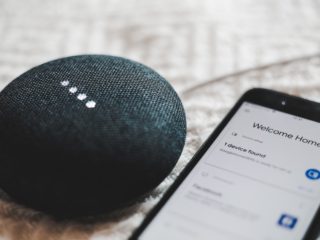From digital assistants Siri and Alexa to e-commerce and self-service banking chatbots, artificial intelligence (AI) continues to change the way we buy, sell, interact, manage activities, and everything else in between. In fact, by 2022, 75% of enterprises are expected to include elements of AI to improve their technology and process development.
Data capture and data entry are no exception. For many businesses, manually entering data and sifting through vast amounts of documents are time-consuming and resource-intensive tasks, especially in today’s increasingly paperless age. AI, along with other data processing tools and technologies, helps address this by automating these tasks at scale. It works by classifying, extracting, and validating relevant data that can then be used for other applications or business outcomes.
If securely and properly set up, AI can help business processes become more efficient. Companies, in turn, can redirect and concentrate their resources into more significant and complicated work, such as moving towards digital transformation.
Here are some of the ways business processes can be streamlined by applying AI to data capture, entry, and processing:
- Significant decrease in errors, misinterpretation, and risks to fraud or compliance issues
- Improvement in the quality of data
- Seamless integration with existing frameworks and technologies, if set up properly
- Enhanced workforce productivity and satisfaction by eliminating menial tasks or workloads
Data Capture and Data Entry Automation: Use Cases
Many real estate, retailers, and B2C firms can benefit from automating data capture and data entry in their loyalty programs. Customers, for example, can simply scan and upload their shopping receipts — from the spent amount and date to purchased items — so they don’t have to struggle looking for physical receipts. It doesn’t just improve customer retention — companies can also better standardize how their customers’ data can be digitalized.
The same advantages can be seen to insurance and financial services companies. Accurately cross-checking customer inputs and scanned receipts for insurance claims can take considerable time and effort. It may also become a tedious process for customers to fill in forms each time they submit a claim.
These challenges are what Oursky had in mind when creating FormExtractor, an AI- and optical character recognition-powered (OCR) technology for automatically capturing and entering data. Businesses looking to digitalize the data they collect and use for other applications can use FormExtractor as part of their business process automation strategies. In the same vein, customers can enjoy more seamless interactions with the companies they do business with.

FormExtractor: AI-Powered Data Capture and Data Entry
FormExtractor embodies data capture and entry by AI. It employs a combination of OCR and AI to extract data from physical documents and convert them into structured, digital data that can then be used for your software or application.
In technical terms, FormExtractor turns disorganized texts returned from OCR engines into structured JavaScript Object Notation (JSON) key-value pairs of relevant data that can then be instantly plugged in to your application or software.
At present, FormExtractor natively supports data extraction for these documents:
- Business registration licenses in Hong Kong
- Food, travel agency, and hawker licenses in Hong Kong
- Identity card in Hong Kong
- General shopping receipts
Here are some of FormExtractor’s capabilities:
Field extraction management. Users can submit forms to a portal and define the fields from which data can be extracted. Alternatively, we can help set things up as a standalone consulting project.
Photo pre-processing. FormExtractor pre-processes uploaded photos to improve the OCR accuracy. Photos are optimized for lighting condition, contrast, skew correction, and edge detection, among others.
Configuration management. A web-based portal for your IT team is provided to efficiently manage the configurations of the forms and the application programming interface (API).
Multiple OCR engine support. FormExtractor currently supports Google Vision APIs, Azure Computer Vision OCR, and Tesseract. Our recommendation is to use whichever is more accurate.

OCR and AI to the Rescue: FormExtractor’s Success Stories
FormExtractor has had its foothold in the public sector and healthcare industry, and we’re working to expand its footprint to other industries. Here are some of FormExtractor’s real-life case studies:
Faster processing of grant/funding applications. A charitable/non-government organization offered a subsidy to local small and medium businesses to help them survive the economic downturn in the second half of 2019. One of the requirements for applicants is to submit their business registration or industry-specific licenses. To speed up the application process and reduce manual cross-checking, Oursky’s team worked with Google Hong Kong to use FormExtractor and Google’s Vision API to extract the applicants’ business registration numbers and their respective company names.
Efficient management of hospital schedules. A healthcare group has a mobile app that aggregates all the information a caregiver needs to know about his patient. One of the app’s functions is management of hospital visits. With FormExtractor, caregivers can simply take a photo of the hospital visit form and have the data automatically entered to the app. This significantly saves them the time from manually keying in visit schedules each time, enabling them to focus on providing care to their patients.
FormExtractor-hosted service adopts a simple pay-as-you-go model by calculating the number of API calls your app uses each month. We also support on-premise or cloud deployment. To get a ballpark, please contact us at info@oursky.com.









